#RPM Italian
Text
Revitalize Your Ride: The Complete Guide to an Italian Tune-up.
https://gob.stayingalive.in/unleashing-the-thrills-of/revitalize-your-ride-the.html
Discover the Italian Tune-up: its purpose, application to motorcycles, procedure, benefits, and risks. Revive your engine performance today!
Explaining an Italian Tuneup
What is an Italian Tuneup?
An Italian Tuneup is a spirited practice used by car enthusiasts and mechanics to clean out the engine by driving…
#car care#carbon buildup#driving tips#engine health#Engine performance#fuel efficiency#Good Old Bandit#Gud Ol Bandit#high RPMs#Italian Tune-up#Motorcycle maintenance#News#Sanjay K Mohindroo#Sanjay Kumar Mohindroo#Sanjay Mohindroo#Vehicle maintenance
0 notes
Text
Duran Duran - Ordinary World
1992
"Ordinary World" is a song by English pop band Duran Duran, released in December 1992 as the first single from their seventh studio album and second self-titled album, commonly known as the Wedding Album. The ballad, written by the band and co-produced with John Jones, reached number 1 on the US Billboard Top 40/Mainstream chart, the Canadian RPM 100 Hit Tracks chart, and the Italian Singles Chart. It also peaked at number 3 on the Billboard Hot 100, number 2 in Iceland and Sweden, and number 6 on the UK Singles Chart.
The song was nominated for Ivor Novello Award for Best Song Musically and Lyrically in May 1994. The music video was nominated for MTV Video Music Award's Best Cinematography in a Video in 1993. Lead vocalist Simon Le Bon sang the song with Luciano Pavarotti at a benefit concert for War Child. "Ordinary World" remains one of Duran Duran's most popular songs and, in October 2021, was their second-most streamed song in the UK. Le Bon noted the song lyrics are about "trying to get over the death of a best friend. And putting it into words freed me, absolutely. It really worked for me emotionally and mentally. Everyone who heard it could apply it to something in their life, but for a different reason."
"Ordinary World" received a total of 75,2% yes votes! 💖
Previous Duran Duran polls: #21 "The Wild Boys", #133 "The Chauffeur".
youtube
1K notes
·
View notes
Photo
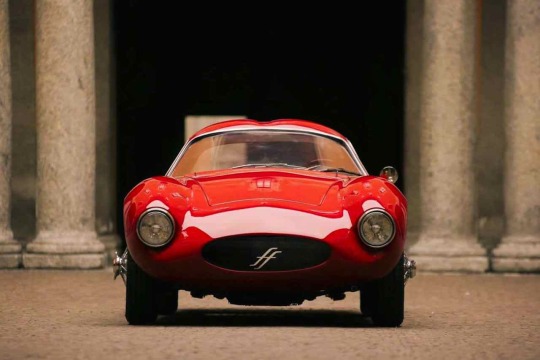
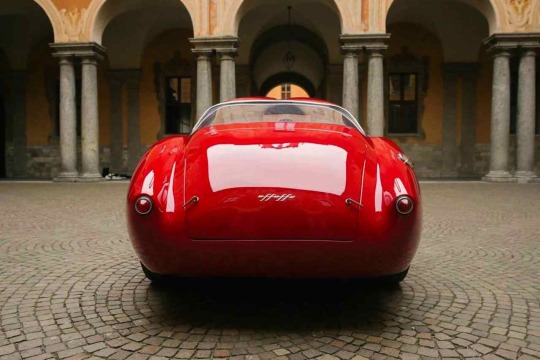
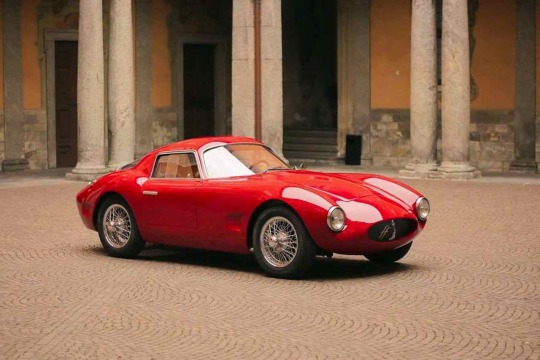
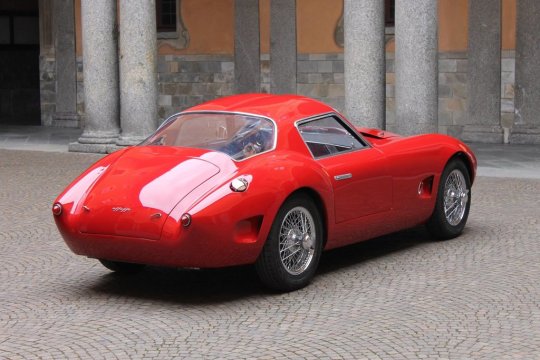



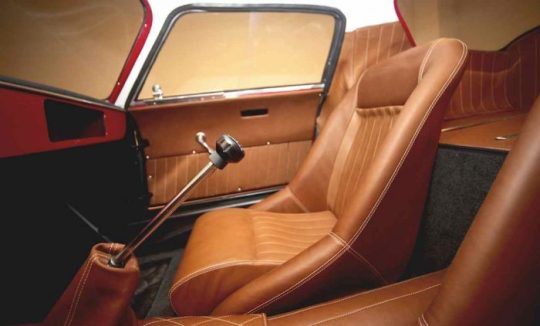
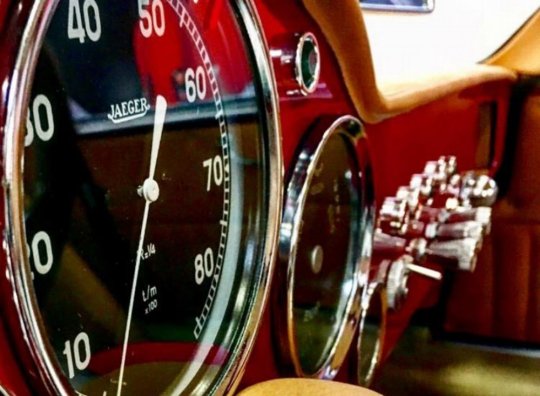
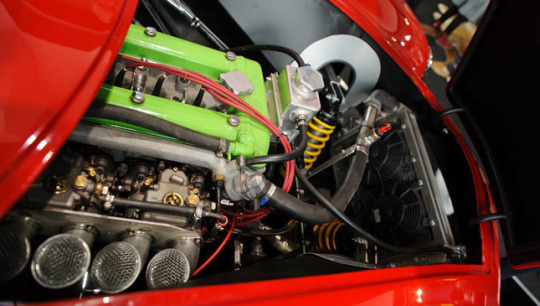
Effeffe Berlinetta
Berlinetta is a name of the past, a name that conjures up a very specific type of car: a high-performing sports car with closed bodywork, a 2-seater (or 2+2 at most). The name Berlinetta embodies all the philosophy of the first car made by Effeffe. A car built today in exactly the same way as craftsmen moulded the famous GTs in the late 1950s: the mechanics borrowed from the series and redesigned to suit new needs, a hand-made chassis and bodywork. All starting from a blank sheet. An original car with a strong personality, in form and in deed, which is the best possible homage to the skill of these craftsmen. A generation we have perhaps forgotten, that offered the Italian car tradition - and the history of motoring generally - plenty in terms of uniqueness, charm and design. A product built and finished by hand, like in the past, with a tubular chassis, hand-beaten aluminium bodywork and wire wheels, seeking to guess and please the taste of the owner, expressing a timeless character.
The Berlinetta prototype was born in 2014, little more than a scale model. Made and finished, but not running: the mechanics are approximate, and it has never really been fine-tuned. But it is beautiful. An authentic time-machine. It seems as if it has just been found in a hay barn and dusted down. In addition, being practically a style model, its lines are pure and smooth, not “dirtied” by license plates or indicators. So beautiful, in fact, that, almost as a game, the Frigerio brothers sent a few photos to the people in charge of the Concorso di Eleganza di Villa d’Este. And, a surprise, they sent an invitation to present the Berlinetta in the Concept Cars category. A dream within a dream, the self-built car made its début and the world’s most prestigious and glamorous elegance competition.
Along with the interest and pleasure shown immediately by the public and the media, this would have gone to anyone’s head. But as we know, the Frigerio brothers aren’t the sort of people who sit on their laurels, and they decided the play another chip. They realised that their idea could become something more than just an adventure, and decided to exploit their years of relationships, acquaintances, friendships and skill to set up a workshop to produce the Berlinetta in small series. An exclusive, tailored and fully customisable product. Built as in the past by a handful of old craftsmen wanting to get back in the game, but with the help of the best technologies available today.
The lines of the Berlinetta need no explanation. They are a well-balanced mix of classic, late-50s stylistic elements, from the muscular bumpers to the oval grille, a hint of rear fins and the double bubble roof. The definition of the lines of the car talks of an approach that is about as poetically anachronistic as you can get. The Frigerio brothers started by placing the mechanics and seats on the floor, tracing the basic outline around them with chalk, then gradually building the chassis, welding, cutting and welding again. Following the curves of the tubular metal frame, they then moved onto the bodywork, beaten entirely by hand in aluminium according to the artisanal sensitivity of Vittorio, who has a good hand, assisted by a few panel beaters with forty years’ experience. And from there, the project moved on in a kind of reverse engineering, working backwards by making 3D scans of the shapes to produce the drawings and designs.
Style and proportions have that instantly recognisable Italian flair, as does the passenger compartment, entirely leather-lined with a dashboard painted in the same colour as the car, and the Alfa Romeo-derived mechanics.
Who, working according to the Fia Gr2 specifications of the 1971 European Touring challenge, they were able to achieve around 200 HP at 6800 rpm, with maximum torque of around 30 Kg/m at 4400 rpm, on the road with no technological support.
224 notes
·
View notes
Text
Ferrari - La Ferrari
F1 (and cars) MASTERLIST

Italians just do it better…

The car is equipped with a version of the F140 engine, a 65° V12 Otto cycle, direct injection and atmospheric fuel, mounted in a central position, of 6262 cm³ delivering 800 HP at 9000 rpm, 700 N m of torque at 6750 rpm, with compression ratio of 13.5:1; in addition, the HY-KERS energy recovery system, with the additional 163 HP developed by the relevant electric engine, brings the combined power and torque values to, respectively, 963 HP and over 900 N·m. Thanks to the hybrid scheme, combined fuel consumption is 14.2 l/100 km (7.2 km/l), also managing to limit CO2 emissions to 330 g/km.

The chassis and bodywork, with a dry weight of 1255 kg, are entirely made of four different types of carbon fiber and Kevlar, differentiating themselves in the various areas, adapting to the specific rigidity and shock absorption needs of each. The aerodynamic drag coefficient (Cx) is 0.299 in the minimum drag configuration; but it can vary, increasing, depending on the configuration assumed by the active aerodynamics with which the car is equipped. The suspensions are overlapping wishbones at the front and multilink at the rear. The brakes are made of carbon-ceramic composite material by Brembo, and power to the rear wheels is managed through a 7-speed dual-clutch F1 gearbox.
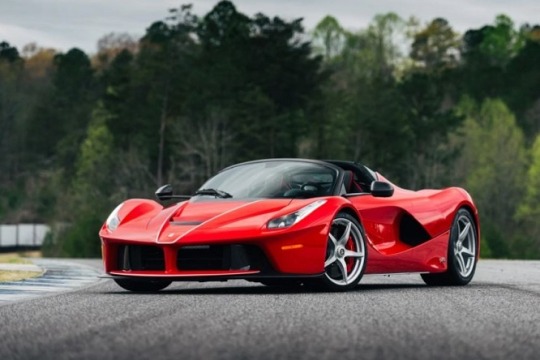
The data that the company provides regarding acceleration are the following: 0-100 km/h in less than 3 seconds, 0-200 km/h in less than 7 seconds and 0-300 km/h in 15 seconds; the maximum speed indicated is over 350 km/h. This made it the most high-performance and fastest road Ferrari ever produced up to that point.
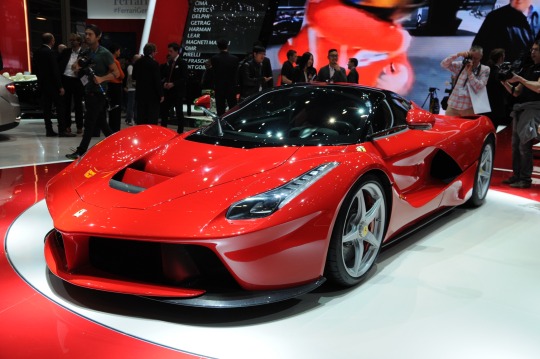
#italy#italian#italia#ferrari#la ferrari#classic cars#fast cars#cars#formula uno#formula 1#formula racing#formula one#f1#ferrari f1#ferrari formula 1#ferrari formula one#enzo ferrari#dino Ferrari
20 notes
·
View notes
Text

Ford Mustang Mach I
A Cammer-Powered 616 HP Ford Mustang Mach 1 – “The Sin City Shaker”
This unusual Ford Mustang Mach 1 is fitted with a rare Ford 427 “Cammer” engine, a V8 with single overhead cams per bank allowing higher RPM operation. Ford originally developed the engine to take on Chrysler’s 426 Hemi in the world of NASCAR.
A Mach 1 Mustang fitted with the 7.0 liter Ford pushrod V8 is a quick car by any standard, particularly in a straight line, but the use of the Cammer 7.0 liter V8 with its SOHC takes it up a few notches – from 335 hp to 616 hp.
Fast Facts – The Mach 1 And The Mighty Cammer V8
Ford developed the “Cammer” V8 in just 90 days in the early 1960 using their existing 427 FE pushrod V8 as a starting point. Their goal was to take on the Chrysler 426 Hemi V8 in NASCAR.
The final production Cammer engine had a single overhead cam per bank spun by a 6 ft long timing chain, and they produced 616 hp at 7,000 rpm and 515 lb ft torque at 3,800 rpm – up to 657 bhp with improved carburetors.
The Ford Mustang Mach 1 was introduced in 1968 as a higher performance version of the standard Mustang. It came with competition suspension and front and rear spoilers, but much of the package was focussed on the car’s looks.
No Cammer V8 engine was fitted to a production car by Ford in period, but this hasn’t stopped enthusiasts from doing their own engine swaps. The car you see here has been professionally converted, looking like a factory-built Cammer Mach 1 might have, had Ford ever built one.
The “90 Day Wonder” – Ford’s Cammer V8
When Ford engineers set out to develop a new V8 to challenge the Chrysler 426 Hemi V8 in the fiercely competitive world of NASCAR racing they knew they had their work cut out for them.

To both simplify and speed up the development process they started with a preexisting engine block – the race-proven 427 FE pushrod V8. The block was modified and a pair of new heads were designed that, very unusually for an American V8 at the time, had a single overhead cam per bank.
Single and double overhead cam engines had largely been the realm of the Europeans, specifically the Italians, Brits, and Germans. Compared to pushrod engines, overhead cam engines typically tolerate higher RPM operation, opening up additional power when designed well.
It was this additional power that Ford engineers were chasing. They took the FE block and modified it to accept the new heads they have developed, the overhead cams would be powered by a 6 ft (1.8 meter) long timing chain and a slew of other minor changes would be made to the engine to safely permit higher-RPM usage.

The length of that timing chain would quickly become a problem for the engine, it necessitated that one cam be a mirror of the other, and under high-RPM usage the cam timing could vary by 7º or more due to the chain stretching.


Sadly, before the engine could even turn in a single lap, it was banned by NASCAR along with the Chrysler Hemi engine as part of a crack down on “special racing engines.”
The Cammer Goes Drag Racing
Rather than dump the Cammer project Ford continued to develop the engine in the hopes of changing the minds of those making decisions at NASCAR, in the meantime they sent the engine off into the world of drag racing – where it proved wildly successful.

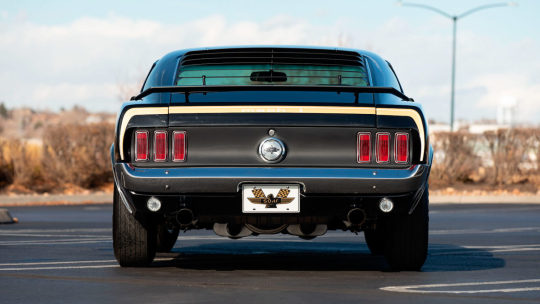

Many of the big names in 1960s drag racing were putting the Cammer to good use, including Bill Lawton who won the AHRA and NHRA Winternationals in 1966. Other Cammer pilots included Mickey Thompson, Gerry Schwartz, Tommy Grove, Tom Hoover, Pete Robinson, Connie Kallita, and many others.
1967 would see Connie Kalitta’s Cammer-powered “Bounty Hunter” slingshot dragster win the Top Fuel events at the AHRA, NHRA, and NASCAR winter meets – becoming the only “triple crown” winner in the history of American drag racing.

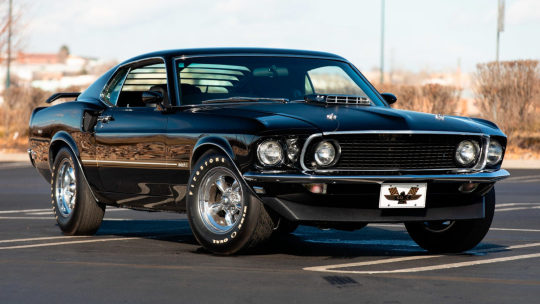

These successes should be no great surprise, as many drag racing outfits were getting over 2,500 hp out of their supercharged Cammers.
The Cammer Mach 1 Shown Here – “The Sin City Shaker”
The car you see here was nicknamed “The Sin City Shaker” thanks to its combination of a Ford Cammer V8 engine and a shaker hood.
The shaker hood was offered as an option on the Mach 1, it comprises of a hole in the hood and a special air scoop mounted directly to the top of the engine. The air scoop rises through the hole in the hood when the hood is closed, and when the engine is running the scoop can be seen to be shaking – hence the name.
Power is provided by a rare, original Ford 427 cubic inch Cammer V8 producing 616 hp at 7,000 rpm and 515 lb ft torque at 3,800 rpm. Power is sent back through a 4-speed manual transmission to the rear axle.
As a Mach 1, the car has that distinctive livery on the outside, including side stripes, a matte black hood with hood pins, a front lip spoiler, and a rear trunk lid spoiler. Inside you’ll find a black-on-black interior and a Hurst cue ball shifter.

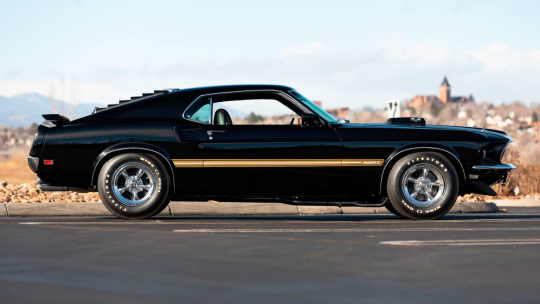

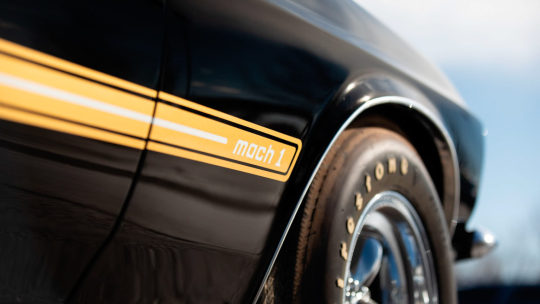
Ben Branch
Articles that Ben has written have been covered on CNN, Popular Mechanics, Smithsonian Magazine, Road & Track Magazine, the official Pinterest blog, the official eBay Motors blog, BuzzFeed, Autoweek Magazine, Wired Magazine, Autoblog, Gear Patrol, Jalopnik, The Verge, and many more.
Silodrome was founded by Ben back in 2010, in the years since the site has grown to become a world leader in the alternative and vintage motoring sector, with well over a million monthly readers from around the world and many hundreds of thousands of followers on social media.

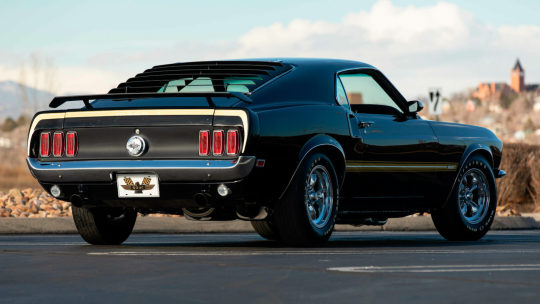


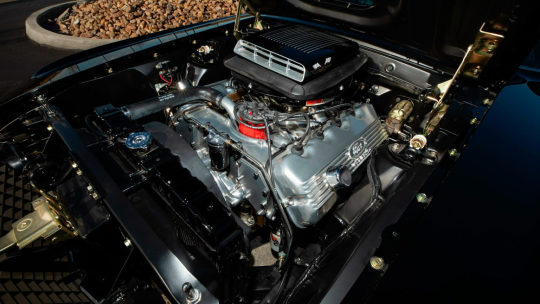
319 notes
·
View notes
Text

Rino Gaetano (Crotone, 29 October 1950 – Rome, 2 June 1981) was an Italian musician and singer-songwriter who was born in Crotone, Calabria.
In March 1960, at the age of ten, his family moved to Rome, where he would spend the rest of his life.
He is famous for his satirical songs and oblique yet incisive political commentary. He is remembered for his raspy voice, for the heavily ironic lyrics of his songs and his social protests. He died in a car accident at age 30. He was a popular and influential figure, widely re-evaluated by the following teen generations.
Success for Gaetano came the following year with the 45 rpm hit record Ma il cielo è sempre più blu ("But the sky is always bluer"), perhaps now the most famous and instantly recognisable of his songs. Unusually, the 45 contained only one song, but it was split into two. In this song Gaetano offers several pictures of everyday life, with irony, clichés and contradictions, citing also his hometown Calabria.
youtube
#rino gaetano#musica italiana#music#italian#ma il cielo è sempre più blu#vintage#1970s#1970's#70s#italian music#singer songwriter#crotone#calabria#italia#italy#south italy#southern italy
13 notes
·
View notes
Text
In The Style, Blue!

SH presented two watches of the same brand at Nobleman's photo shoot, one of which matched the colour well. The watch chosen to match her blue jacket is a MONOBALANCIER HURACAN STERRATO inspired by a Lamborghini from the Italian luxury sports car manufacturer. The colourful piece was launched simultaneously with the new supercar of the same name.

Although SH's trousers have no hems, his stylist did not pay attention to the unfinished edge of the trousers.
Styling @mrmontyjackson

Roger Dubuis has led the charge in daring and innovative watchmaking, earning its reputation as the master of “hyper-horology”. The brand’s creations boast a bold and avant-garde design philosophy, resulting in futuristic and distinctive timepieces incorporating cutting-edge materials and complex mechanical movements.
The Excalibur Spider Monobalancier Huracán Sterrato is a brilliant extension of the brand’s Excalibur line, taking inspiration from the off-road Lamborghini Huracán Sterrato released last year, only this time dressed in an alluring blue attire.
Sporting a blue outfit, the new Huracán Sterrato watch features lines that cut across the dial, echoing the shape of the car’s roof rack. The timepiece boasts a quick-release system for rapid strap changes, allowing seamless adaptation to any occasion. The bright camo-patterned strap is a nod to the gritty abilities of the Huracán Sterrato, a remarkable feat achieved by vulcanising numerous coloured rubber plates.

The New Roger Dubuis Excalibur Spider Monobalancier Huracán Sterrato. Experience the latest offering from the hyper-horology brand created in partnership with the Lamborghini Squadra Corse.

The watch is powered by the automatic RD630 calibre movement, explicitly developed for the partnership with Lamborghini Squadra Corse, and it mirrors the hexagonal air intakes of the Huracán. The balance wheel takes centre stage at noon, tilted at a 12° angle to evoke Sterrato’s rev counter. This ingenious design decision adds depth to the dial and potentially enhances precision by averaging out positional errors.

The date display at 6 o’clock maintains the balance of the dial, while its rotation in front of a coloured decoder makes for a fascinating visual effect. With a transparent case back, you’ll marvel at the semi-skeletonised movement and its full rotor, cleverly resembling a Huracán wheel rim in motion. The dynamic illusion of pure speed is captivating. The watch offers 60 hours of power reserve with twin barrels, ensuring reliability and performance.
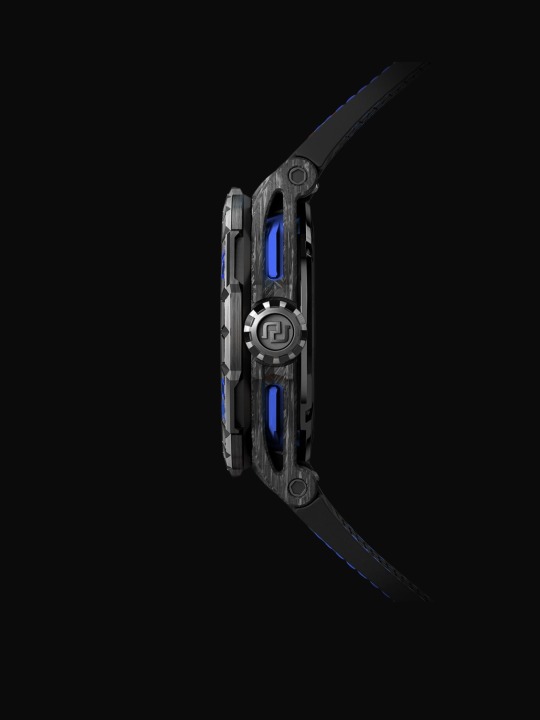
When it comes to telling time, the hour and minute hands might blend into the dial, but there are other focuses. The watch’s essence lies in its experience, just like driving a Lamborghini is more about the thrilling journey than the destination. The Roger Dubuis Excalibur Spider Monobalancier Huracán Sterrato delivers a powerful and exhilarating experience, and it can be yours for £ 59.500 (USD 70,000, taxes not included) Note only 28 will be made.


Lamborghini Huracán Sterrato. Asphalt and dirt can travel together.
The Excalibur Spider Monobalancier Huracán Sterrato is a timepiece to celebrate the Lamborghini Huracán Sterrato supercar built to conquer off-road terrain. The car is a marvel like no other, with its 5.2-litre V10 engine delivering a breathtaking 610 CV (449 kW) at 8,000 rpm and rocketing from 0 to 100 km/h in a mere 3.4 seconds.

10 notes
·
View notes
Text



The 1935 Monaco-Trossi race car had several features that set it apart from everything else on the grid. Its design drew inspiration from aircraft, featuring a front-mounted radial engine and an overall shape reminiscent of a wingless plane.
The power plant was an air-cooled, 2-row 16-cylinder engine boosted by 2 Zoller superchargers from behind.
An unconventional feature was its 2-stroke cycle with a split-cylinder design. The rear cylinders were fed by air, and the combustion remains were then flushed through two 4-to-1 exhaust headers out of the front cylinders. With a displacement of 4 liters, it had undersquared cylinders (65 × 75 mm). The crankshaft was a 3-piece unit placed inside a duralumin crankcase. Connecting rods were of a master-and-slave type and the two superchargers provided a mild boost of 0.7 bar (10 psi), each fed by a Zenith carburetor. The final output of 250 hp at 6,000 rpm was nothing to write home about, as the competition had engines producing beyond 350 hp.
The gearbox was mounted right behind the power unit, and the driver sat in the middle of the car. This layout made the car massively front-heavy, with a weight distribution of 75:25. Its debut was meant to take place at the 1935 Monza GP, but during official testing, it exhibited dangerously imbalanced behavior. The car had an independent front axle with cockpit-adjustable oil dampers and wider front tires, but it suffered from extreme understeer nevertheless.
Moreover, the air-cooled engine had insufficient venting. Due to overheating and handling issues, the Monaco-Trossi car was never put on the starting grid. Even its top speed of 240 km/h (150 mph) was significantly lower than the figures upwards of 300 km/h (186 mph) achieved by German cars. The Italian car was lighter, but that was not enough to compensate for its other deficiencies.
The team did not attempt to fix the issues and abandoned the program immediately.
Fortunately, the single surviving example made it through wartime, and after Trossi's death in 1949, his widow donated the car to an automobile museum in Turin. It remains in perfect condition.
3 notes
·
View notes
Text
Tag game: List 10 of your comfort shows, then tag 10 people
I was tagged by @twig-tea thanks for the tag. Like you I'm having trouble narrowing it down so I cheated a little and some of this are grouped together.
Group One is the Detective group, I used to love detective stories, which means I watched a lot of cop shows, there are some that I can't watch anymore because of the new awarness of the copaganda but these are the ones that I still find comfort in: Cold Case, Elementary, Murder She Wrote, Columbo and Ris Roma (italian version of a CSI like show, this is the first and only spin-off which I like more)
Skam OG S3 and Eyewitness and Skam Italia s2. These I am not reaching for as much since I have BLs now. But they are still comfort shows. Skam Italian s2 in particular I reach when I want to feel better about the borderline semi-fascist hellstate I'm living in, since it's the best gay rep we italians got.
Animated Group: Animaniacs and Tiny Toons along with Looney Toons cartoons I use as background noise kind of shows. And along with the anime Kodomo No Omocha (Rossana in Italian) they remind me the most of childhood. Side note sometimes I listen to intro of Rossana anime and feel like a kid again, cartoon intro used to be a pretty big deal in Italian dub cartoons 80% of which were sanged by a single woman.
Old Sitcom Group: The Golden Girls, Boy Meets the World, Full House and The Nanny
Leverage (not the new seasons, I don't really like them, just the old ones)
Community
Living Single
Superstore
The BL Group (the most recent and the one that I am now leaning to most of all): Until We Meet Again, Be Loved In House I Do, History 2 Right or Wrong, Semantic Error and My School President are the ones that bring me the most comfort.
This is mega cheating because they are not really show as in tv series. But they always bring me the most consistent comfort: Assorted Musicals and Theather Live Recordings. In particular = The Sound of Music, West Side Story 2021, Moulin Rouge, Les Misarable 25th concert, Into the Woods (the 90s recording), Much Ado About Nothing (the 2011 recording with David Tennant), Cats and an italian one Notre Dame De Paris an Italian-French Musical based on the Victor Hugo book not realted to the Disney version at all)
Bonus: the ones that are no longer comfort shows because I can never watch them again: CSI (all of them but I used to love NY), Law and Order, and Veronica Mars (which I haven't been able to watch since I saw s4)
And the ones that didn't make the list: My favorite Power Rangers series (they range from Lost Galaxy to RPM)
Tagging: @thehollowprince @heretherebedork @callipigio @benkaaoi @slayerkitty @respectthepetty
It's not 10 but I am bad with names so these are I could think of. No pressure to them of course.
11 notes
·
View notes
Photo

Dakar Goose: 1994 Moto Guzzi NTX 750 by @gas_and_oil_motorcycles — an ex-Italian Polizia bike that arrived in a bunch of boxes, resurrected into a Dakar-inspired scrambler: "It's a light and playful enduro -- an Italian tractor, and a good companion on your travels... It's a fairly light bike with power from low rpms, so off-roading is just joy after joy." Photos: @jakubfreyphotography. Full story today on BikeBound.com! ⚡️Link in Bio⚡️ https://instagr.am/p/CkihARIO2VR/
76 notes
·
View notes
Text

Swipe File #4 -- "Werewolf in a Girls' Dormitory" (1963)
Werewolf in a Girls' Dormitory was a great high-concept horror movie title affixed to the U.S. release of the 1961 Italian-Austrian co-production Lycanthropus. The American distributors put a fair amount of effort into marketing the dubbed version, including 45 rpm records of the new theme song "The Ghoul in School," and a "Werewolf Kit," among other things.
The "key art" for Werewolf in a Girls' Dormitory features a screaming woman and a pretty great drawing of the titular werewolf. The latter image became moderately iconic, showing up frequently in newspaper ads (even for screenings which didn't include Werewolf in a Girls' Dormitory). It was re-used for a Spanish-language re-release of the 1940 Bela Lugosi horror movie The Devil Bat, and -- presumably non-licensed -- it can now be obtained printed on a sofa pillow, a cap, a cellphone case, etc.
The publicity material for the original version Lycanthropus was mostly photo-based and -- while decent -- didn't achieve the same sort of pop culture permanence as the U.S. version. One of the images was re-created for the Italian comic book Vampirissimo, with the werewolf changed to one of two "Vampire Siamese Twins." The other brother seems to have been based on Bela Lugosi and/or Christopher Lee.
2 notes
·
View notes
Text
RPM SETS THE BAR!
Located in the Mount Vernon neighborhood of Washington, D.C., RPM Italian embodies a modern ethos with an Italian essence, showcasing a chef-inspired menu that emphasizes contemporary flavors and encourages sharing among diners.
The ambiance- chic and contemporary, complete with white leather seats and attentive service, sets the stage for an opulent evening out. The menu offers versatility with its foundation in Italian comfort food: expect starters like prime beef meatballs in rich red sauce, premium steaks such as Gorgonzola-cured wagyu, and housemade pastas. Central to RPM Italian's culinary identity is its pasta program, featuring over a dozen varieties of freshly crafted artisanal pastas made by hand daily. Complementing this cornerstone are a plethora of menu highlights, including an extensive array of antipasti, crudo, steaks, chops, simply grilled fish, and beloved Italian classics, all ideal for communal enjoyment.
But what about the service? RPM understood the assignment in this department for sure!
The attention to detail and preparation are paramount at RPM Italian restaurant, where both style and cuisine are meticulously curated. From the impeccably dressed waitstaff in their white coats, evoking a Hollywood-esque ambiance, to the personalized approach of each waiter, it's evident that every aspect is finely tuned to deliver a sophisticated dining experience. Their eloquent descriptions of entrée choices and drink options further enhance the overall performance.
Yes, the menu is phenomenal if you're an Italian lover, but, the service is what really made the experience one to remember. RPM Italian deserves a spot on your list for anniversaries, memorable first dates, and any occasion where you seek to savor life's moments with flair. Kudos to the entire RPM team for their dedication to treating every guest like a celebrity and maintaining the integrity of the food and dining experience, which has garnered more acclaim than even the celebrity owners themselves. Here's to RPM Italian – cheers!

3 notes
·
View notes
Photo


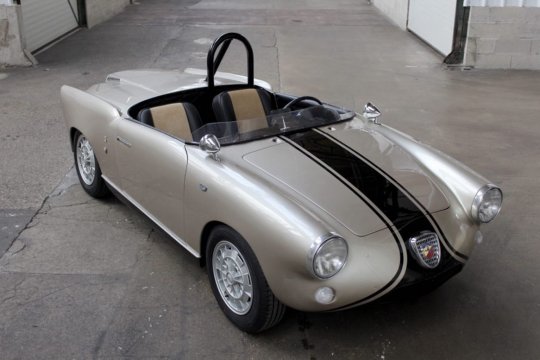


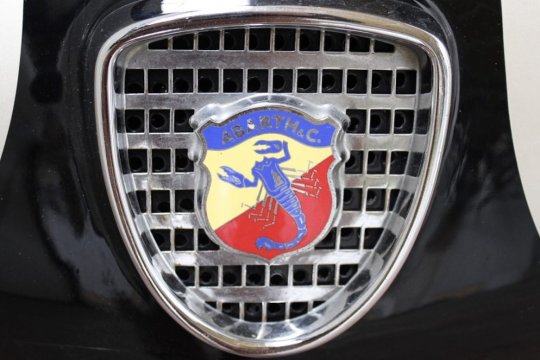



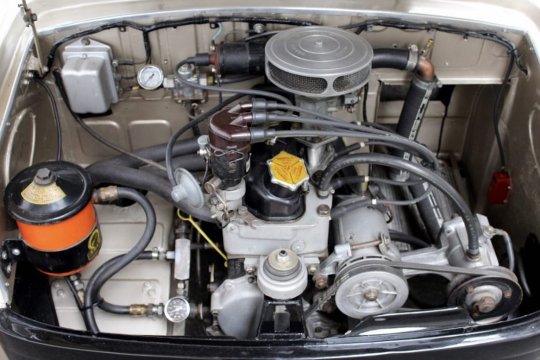
Abarth 750 Allemano Aluminum Spider
Serafino Allemano founded his Carrozzeria in 1928, starting as a repairer for other brands, especially Italian ones. A few years later he decided to create his own designs, he designed and manufactured some exclusive series for Maserati, Alfa Romeo, Lancia until 1965. The 750 Allemano Spider was commissioned by Abarth because some racing drivers preferred open cars, in addition to the fact that the American market was crazy about roadsters. It is based on the Fiat 600 structure with an aluminum spider body and Plexiglass windscreen, equipped with Campagnolo alloy wheels. The Abarth four-cylinder engine of 747 cc increased to 44 horsepower at 5800 rpm allows to exceed 150 km/h coupled with a 4-speed synchronized gearbox. The Spider Allemano was very popular in competition around the world for its light weight of 550kg.
This Fiat Abarth 750 Allemano Spider, chassis number 476565 and engine number 667974 had been prepared for American races in the 60's.
165 notes
·
View notes
Photo



Comprehensive restoration Green with Gold pinstriping
Engine makes 13 HP at 3,800 RPM and weighs 130 kg
Exposed flywheel
Dell'Orto carburetor
Bosch ignition
Lucas acetylene headlamp
Frame no. 2793
Engine no. 2591
Sold on a Bill of Sale
Purchases by a Nevada resident or Nevada dealer are on a Bill of Sale for display purposes only Not for highway or public road use
This 1927 Moto Guzzi Sport 13 is a fantastic, historic Italian sports machine. The Sport series was the only model Moto Guzzi produced between 1923 and ‘28, and it was well regarded for its good performance, beautiful lines and excellent build quality. The Sport 13 has a 500cc, 82x88mm motor that produces 13 HP at a leisurely 3,800 RPM. Everyone loves the external flywheel motor (the “bacon slicer��) of this horizontal IOE (F-head) single; the external flywheel meant a very narrow crankcase was possible, which made for an extremely robust crankshaft that was free of flex.
Moto Guzzi engines were always unit-construction, with the gearbox housed in the crankcases and a geared primary drive, which was very advanced for the day. The Sport 13 has a strong twin-tube frame, a very low center of gravity, and thus excellent handling and lively performance with a 286-pound weight and 60 MPH top speed. The Sport 13 follows the original 1921 Moto Guzzi design, although the prototype had an overhead camshaft. The F-head was much easier to produce, so from 1921-23, the Normale was the sole model of the range. The Sport 13 was painted a beautiful green with gold and black pinstriping until its final year, 1928, when it was painted red. The Sport 13 used a Dellorto carburetor and Bosch magneto ignition. This machine was originally ordered without electric lights, and as such, carries a Lucas acetylene headlamp. Total production of the Sport 13 was 4,107 machines.
This 1927 Moto Guzzi Sport 13 is a very rare, beautifully restored, early Italian machine. It was a harbinger of the future of the Italian motorcycle industry, which always combined elegant lines with advanced engineering and great performance on the road. This Guzzi is a real stunner.
16 notes
·
View notes
Text

Italian red blood makes noise
Appeared on 8/10
Ferrari 512TR 300.88km/h
Successor model of Testarossa "512TR". In 1992, he was the first to clear 300km/h at Yatabe. The highest speed trial runs through the bank upshifting to 5th gear at 240km/h in 4th gear, and comes out on the straight at the measurement point. The tachometer was pointing to 7000 rpm and steadily rising. The meter then indicated 301 km/h.
4943cc 180 degree V12 DOHC48 valve heart is 10.0 high compression ratio 425ps/6750rpm.50.0kgm/5500rpm
16 notes
·
View notes
Photo

1951 Ferrari 212 Inter Coupe first owned by Anna Magnani (actress) - Enzo Ferrari Museum in Modena, Italy front, longitudinal 60° V12 2562.51 cc 110 kW (150 hp) at 6500 rpm 200 km/h top speed One of the first stars to drive a Ferrari was Oscar-winning Italian actress Anna Magnani. In January 1951, she took delivery of a two-tone Ferrari 195 Inter, an evolution of the 166 with a longer wheelbase and an enlarged, more powerful 2,341cc Gioachino Colombo-designed V12 engine. Magnani was a household name, a truly global film star. A famous picture of her with the Ferrari was taken on the set of the 1952 film La Carrosse d'Or - The Golden Coach, which was directed by Jean Renoir. She later won an Oscar for her performance in the 1956 movie The Rose Tattoo. Her 195 Inter was a Vignale-bodied version of the second road-going Ferrari. Enlarging the V12 engine made it more flexible at low speeds - important for period customers unused to the high performance of a Ferrari. However, it was also more powerful, giving it a high top speed for the time. Italian coachbuilders Touring, Ghia and Ghia Aigle also produced body variants of the 195 Inter. Anna Magnani owned her Ferrari until 1959, when it passed into the hands of collectors. It was later believed to have been converted by the factory to 212 Inter specification. In 2016, Magnani's former Ferrari won the FIVA Preservation Award at the Argentinian Autoclasica event. Info: Ferrari NV #ferrari #ferrari212 #luxury #modena #scuderiaferrari #ferrarimuseum #ferrariclassic #museocasaenzoferrari #enzoferrari #classiccar #carmuseums #annamagnani #ferrariheritage #italia #supercar #oldtimers #cars #supercars #rarecars #classiccars #traveling #forzaferrari #ferrarilife #luxurycars #cavallinorampante #travel #ferrariworld #prancinghorse #carsofinstagram #womendrivers (at Museo Enzo Ferrari - Modena) https://www.instagram.com/p/Cpqb4I4o5C9/?igshid=NGJjMDIxMWI=
#ferrari#ferrari212#luxury#modena#scuderiaferrari#ferrarimuseum#ferrariclassic#museocasaenzoferrari#enzoferrari#classiccar#carmuseums#annamagnani#ferrariheritage#italia#supercar#oldtimers#cars#supercars#rarecars#classiccars#traveling#forzaferrari#ferrarilife#luxurycars#cavallinorampante#travel#ferrariworld#prancinghorse#carsofinstagram#womendrivers
2 notes
·
View notes